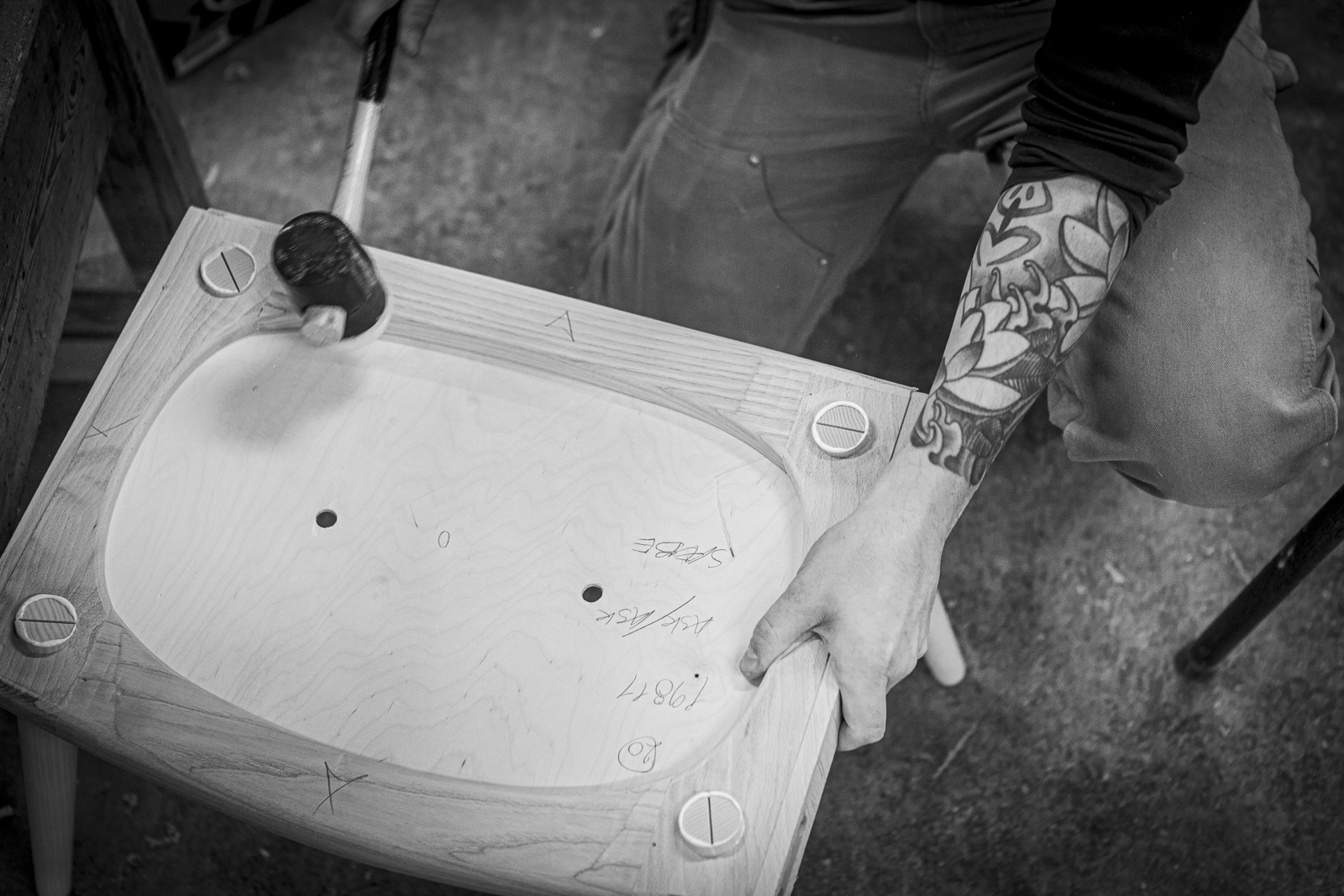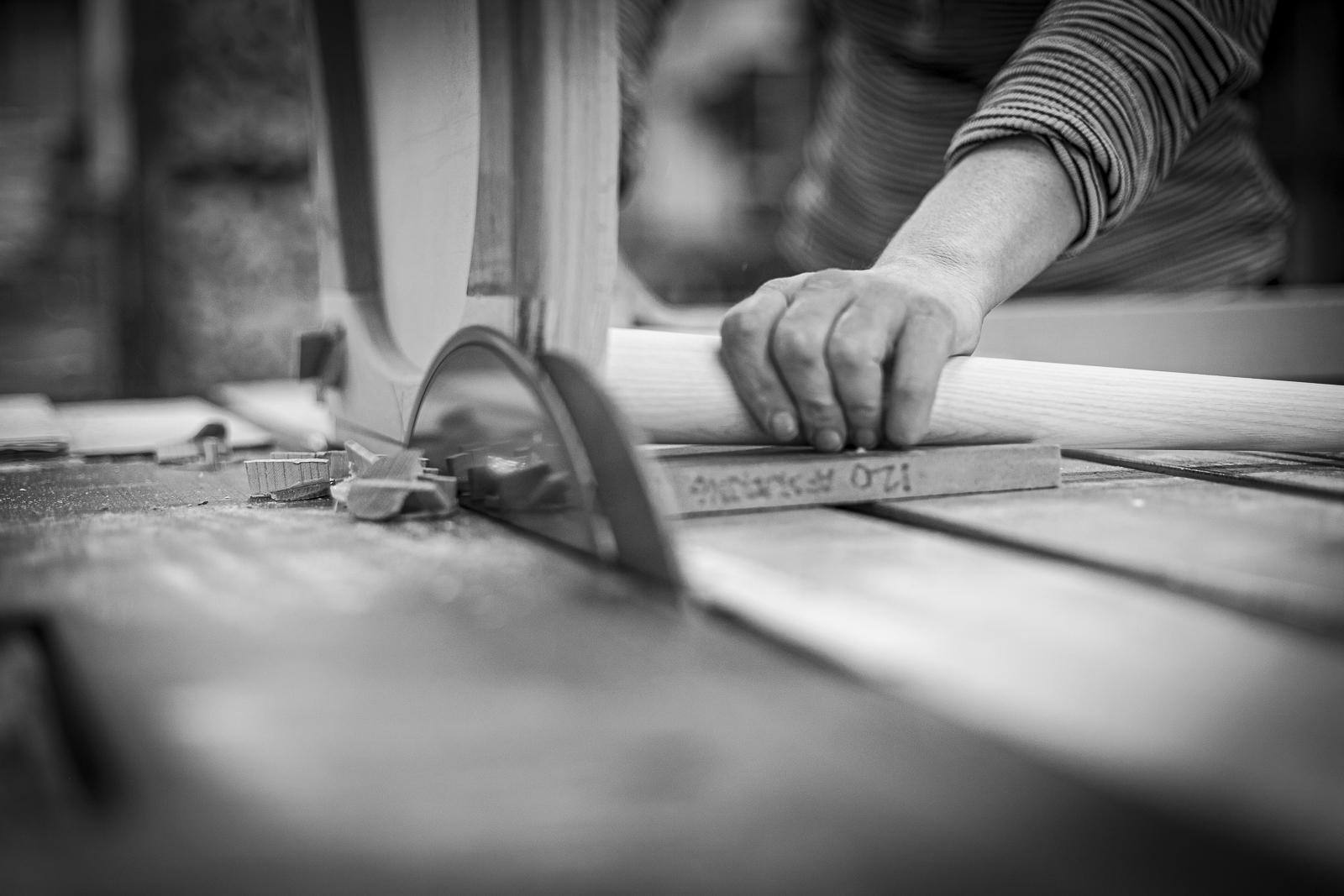
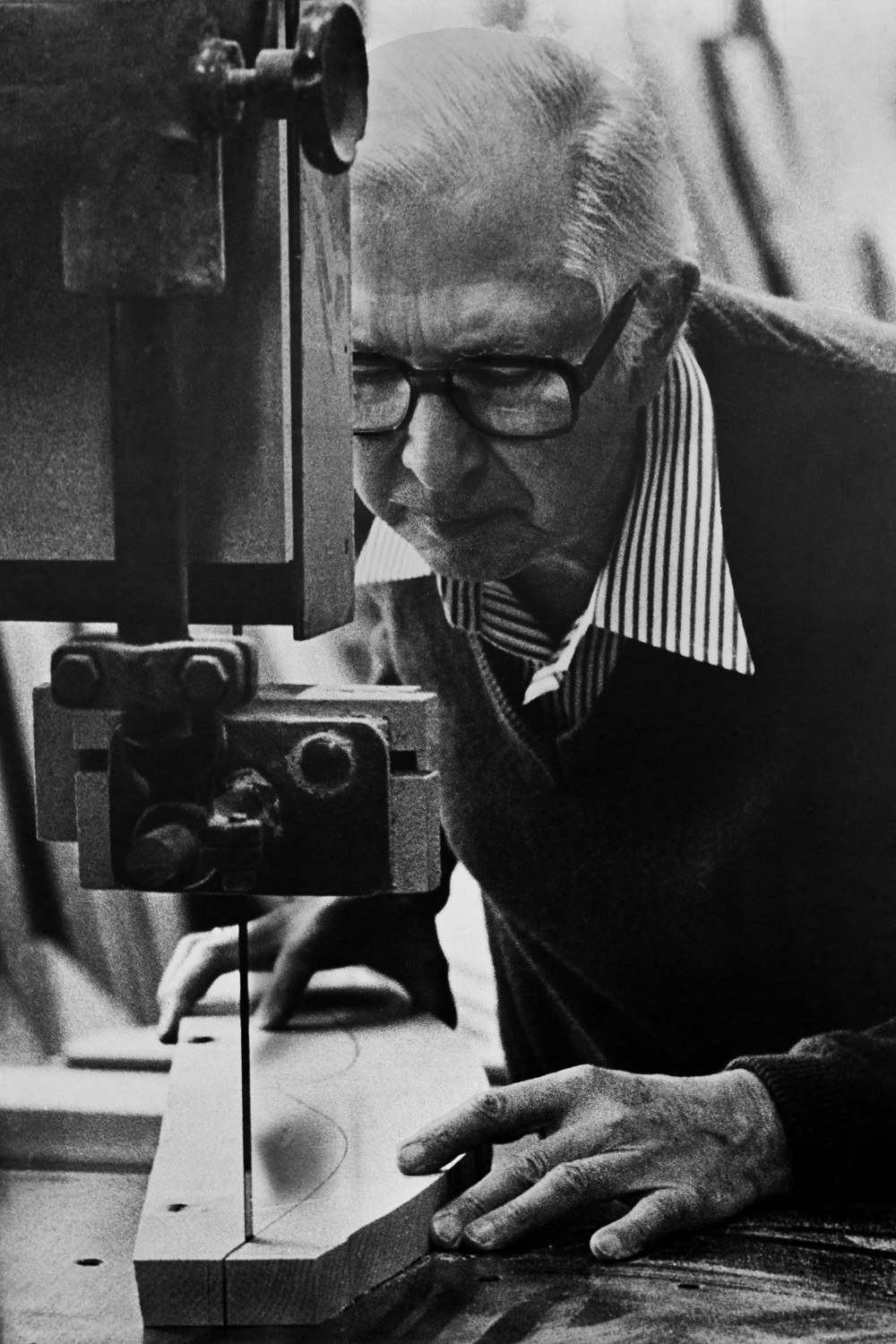
Wegner expressed great interest in the CNC machine, and when he saw it for the first time he exclaimed, “Wow – wish I’d had one of those!”.
But making furniture corresponding to the vision of the designer is a challenge that can’t be left to a machine. It is the main job of the woodcutting machinist to cut and prepare the individual wooden pieces.
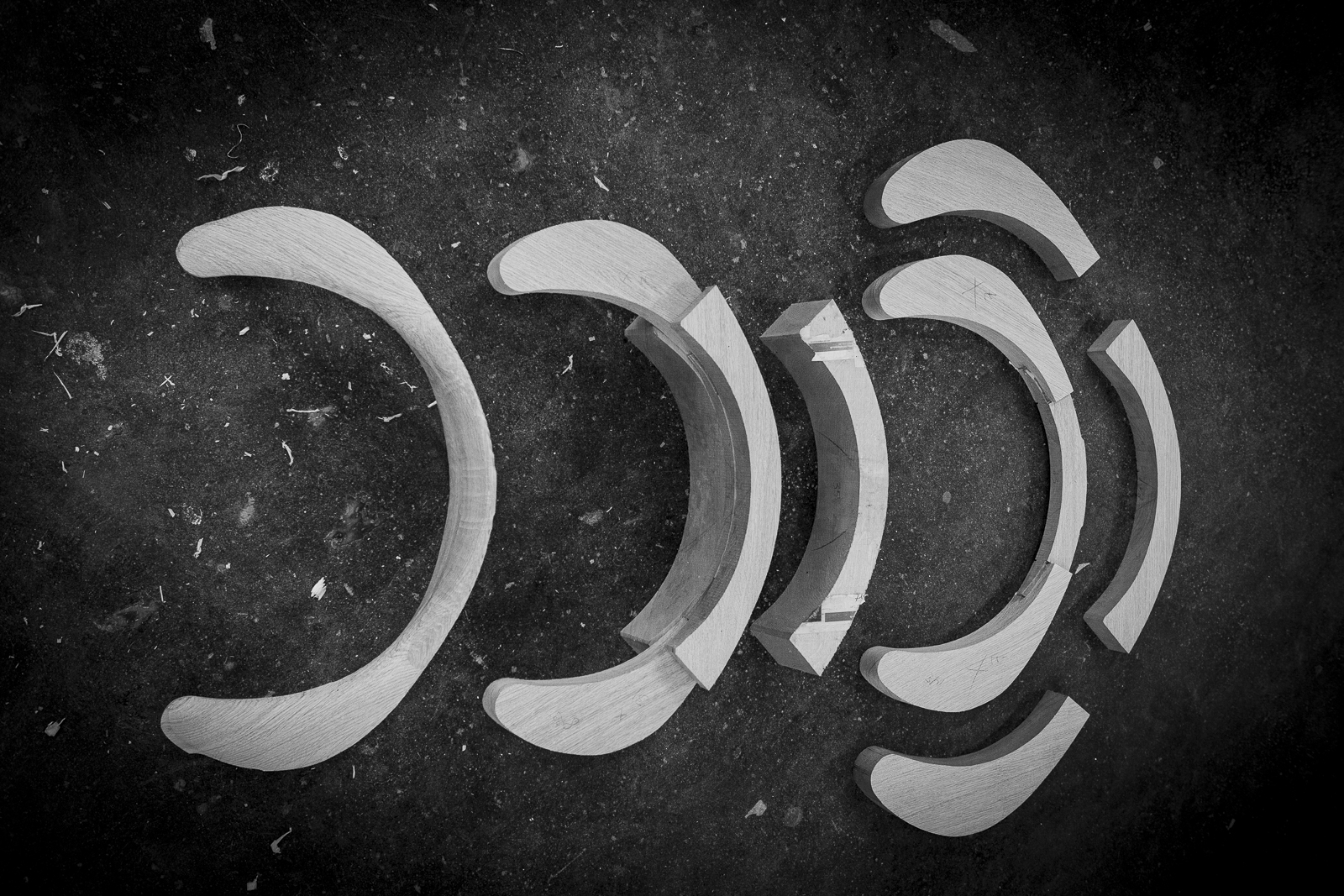
Making furniture corresponding to the vision of the designer is a challenge. It is the main job of the woodcutting machinist to cut and prepare the individual wooden pieces. And, since wood is an organic material, it is important to treat it properly from the beginning.
As such, the woodcutting machinist’s work is essential to the durability of the finished product.
Initially, the woodcutting machinist cuts the wood into individual pieces. Each piece is then prepared by planning, cutting, and polishing it into the desired shape by means of sawing, milling, planning machines, copying lathe and CNC-machine.
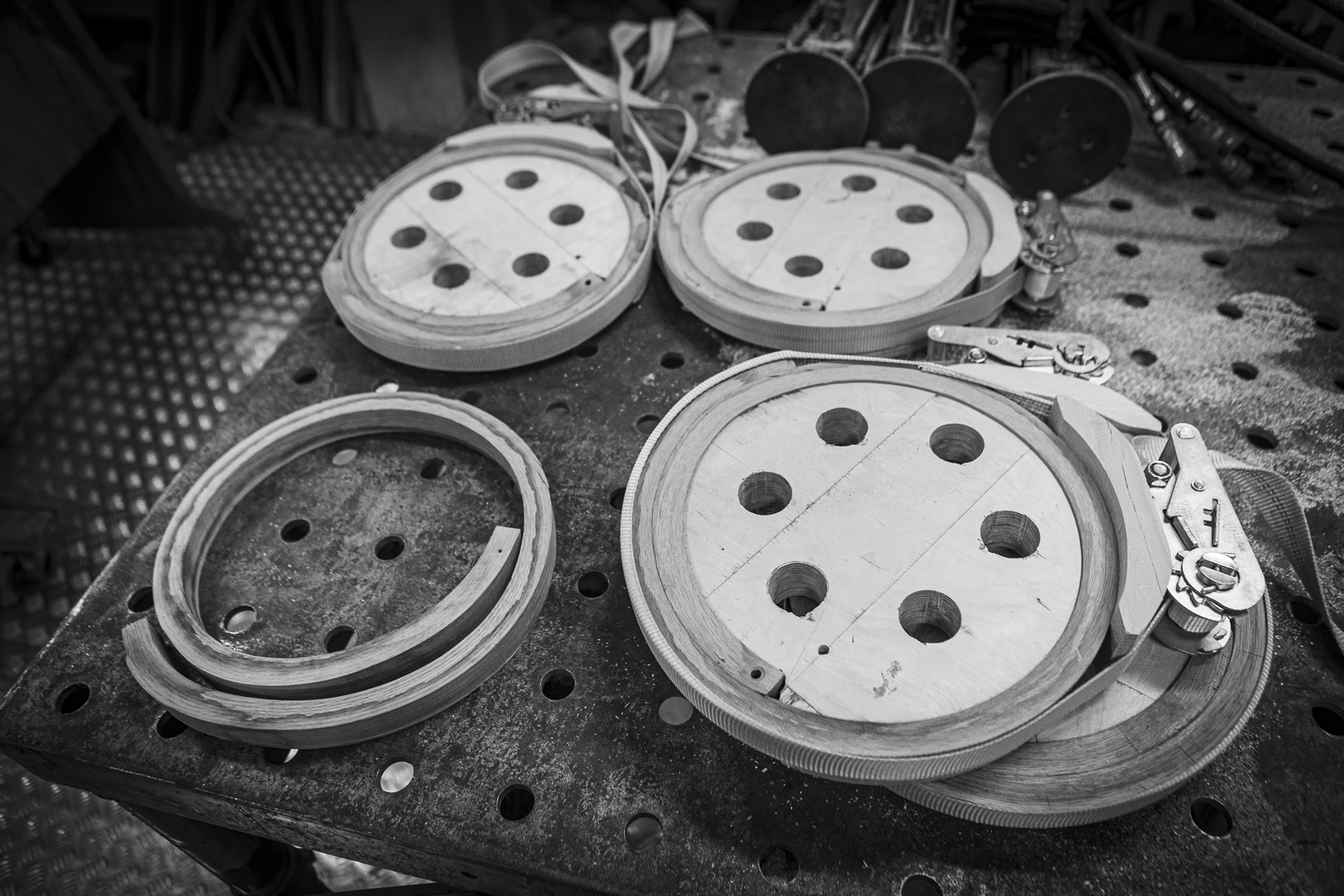
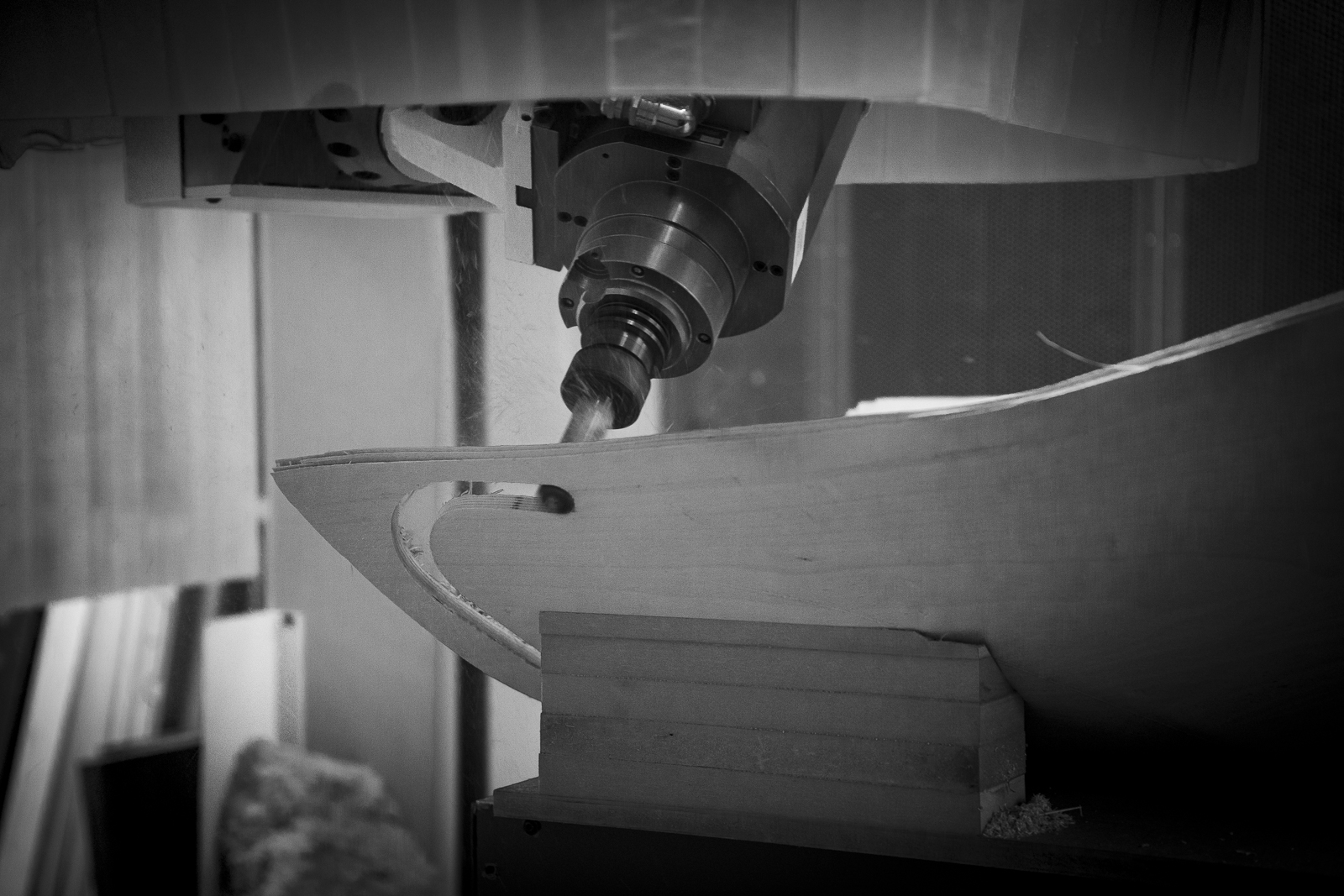
The most cutting edge piece of technology at PP Møbler is the custom-built five axis-milling robot, the CNC machine (Computer Navigation Control). The robot is capable of moving and orienting freely and extremely accurately in three-dimensional space. It is astoundingly flexible and accommodates the integration of many different tools.
As a result it is not merely a milling machine but a multifunctional tool where the only limitation is the imagination and skill of the user. A craftsman has to invest time to understand and work with the computer interface.
As the CNC machine works in a closed environment it shifts the critical milling moments away from the craftsman’s hands and eyes.
Aligning the programme with the physical position of an item is, therefore, a time consuming and often experimental challenge. This requires the experience gained from working with more traditional machinery.
At PP Møbler skilled and experienced craftsmen develop the programming and setups.
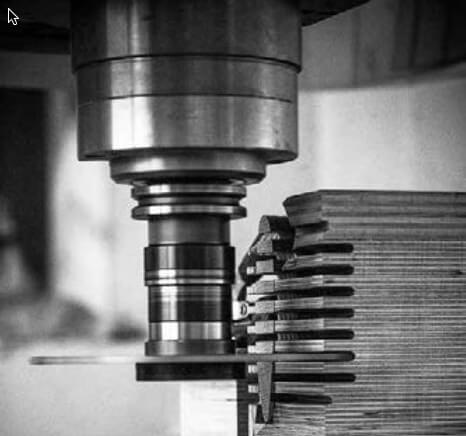
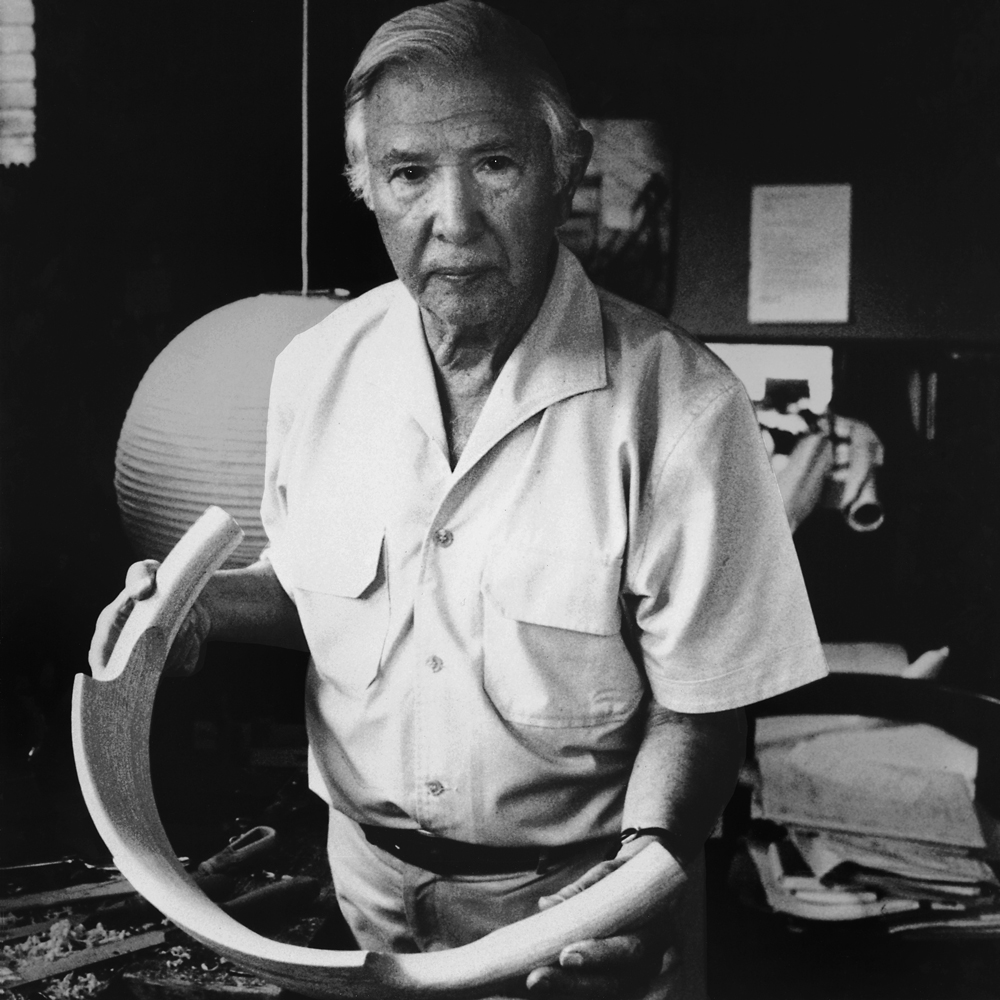 photo: Jørgen Schytte
photo: Jørgen SchytteThe first CNC machine was installed in 2001, and Hans J. Wegner followed closely the first years of implementing the new CNC technology. Wegner expressed great interest in the machine, and when he saw it for the first time he exclaimed, “Wow – wish I’d had one of those!” Wegner’s exclamation illustrates that he had nothing against technological progress as long as it helped improve quality.
This it certainly did.
When the CNC machine was programmed to cut the joint for the back of the Round Chair it did so with unprecedented precision.
The two old friends Wegner and Ejnar Pedersen were so astonished that they sat for half a day just watching the younger generations working with the machine.
Moulding is a method where glued wooden slats or veneer are secured in a mould and pressed into the desired shape under great pressure (the method is also known as lamination). By moulding it is possible to give shape to very large items. One may carry out highly complex bending by this technique. The only limitation is the size of the mould and the properties of the wood itself.
One example of moulding in PP møbler’ production is the Circle Chair. For its construction, Søren Holst Petersen and master journeyman Henry Fisker created a machine where thin pieces of wood are run through a glue roller and then buckled and shaped in a mould. Subsequently, the special glue is hardened by high-frequency sound-waves.
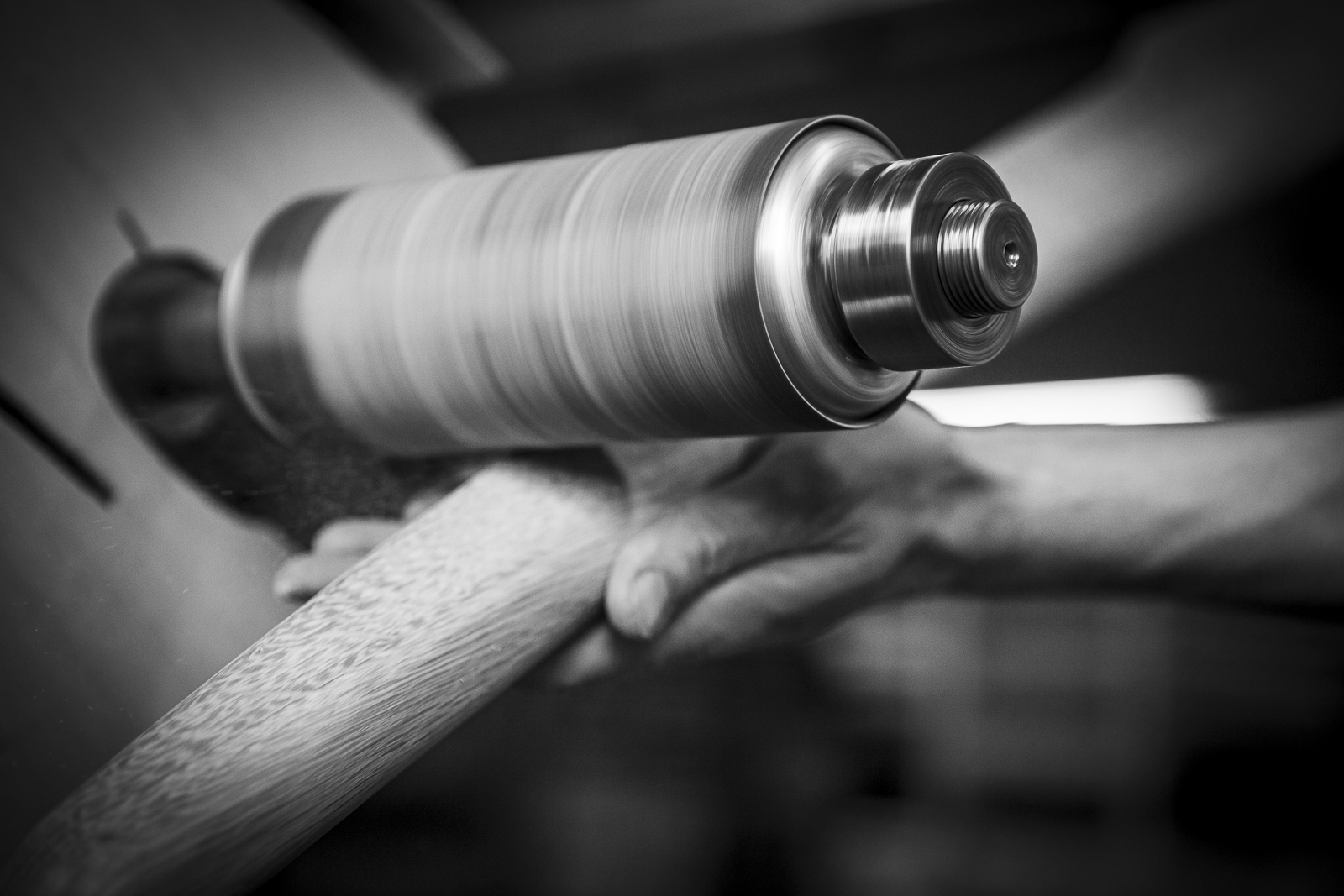
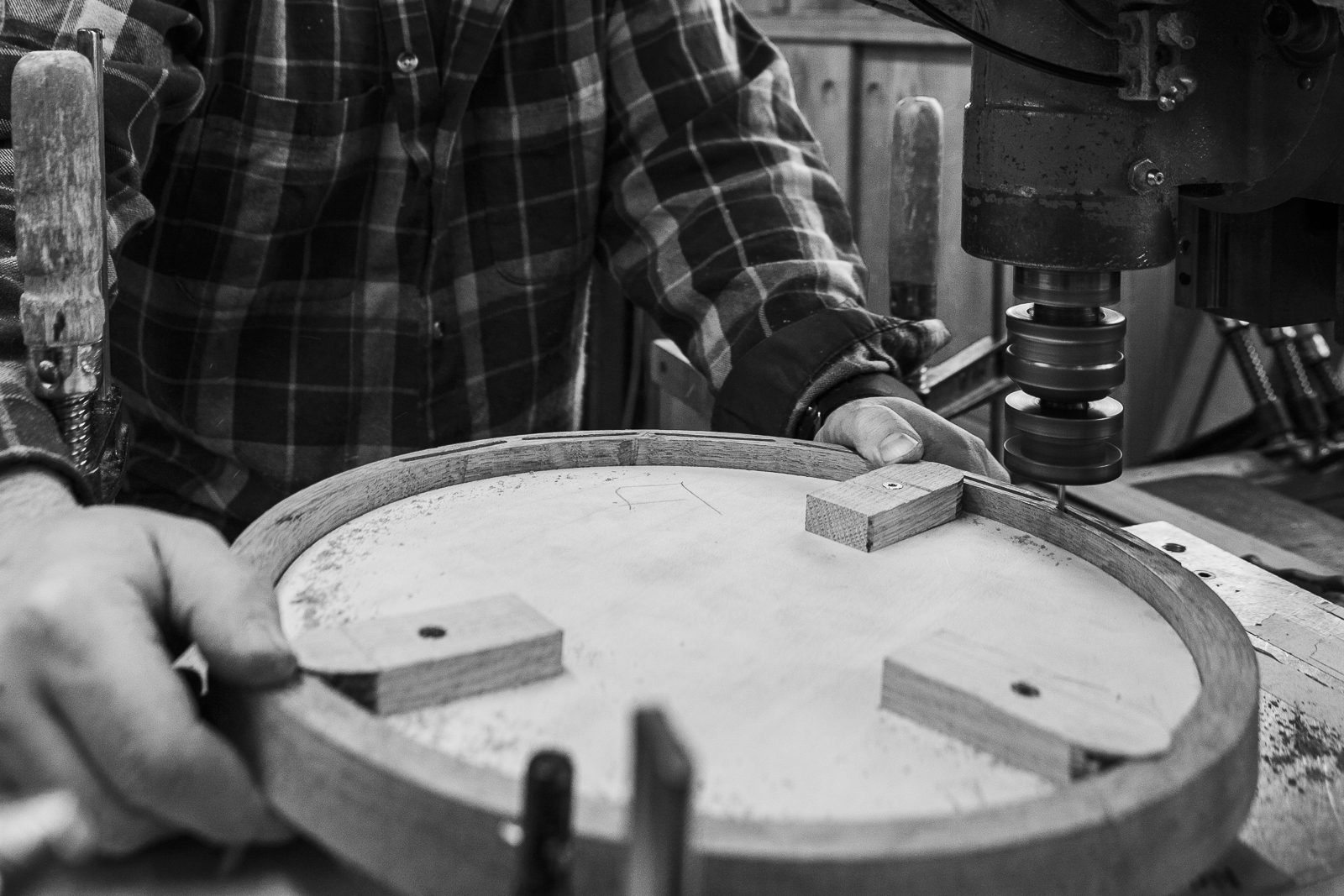
Producing a large number of different pieces of furniture over many years and our tradition for developing new types of furniture has given PP Møbler a special expertise in making templates for the fixation and milling of wood
Working with templates demands a certain ingenuity and an ability to create solid and durable solutions. The template is the foundation of a precise and complete result of the machinist’s work and therefore also the quality of the individual piece of furniture.
We have often improved constructions and processes when we have taken over furniture from other manufacturers. E.g. PP 501/503 was previously joined by dowels. Today it is joined by tenons, making the joint much stronger and giving the chair a much increased life-span.
Our extensive experience with templates has been extended to our CNC-machine, which has added an extra dimension to the machinist’s work.
Part of our collection is produced on an advanced copying lathe. The lathe is capable of turning pieces of wood according to a template, copying its shape to the wooden item.
The machine handles both two- and three-dimensional templates, but does have its limitations, since the item is placed on a fixed axis.
With the proper template, the copying lathe is a highly flexible and fast tool, which handles most items. It is used particularly for chair parts and table legs. E.g. the hind legs of the Vallet Chair are made on the copying lathe via an extensive template. Also the individual parts for The Chair are turned on the copying lathe.
